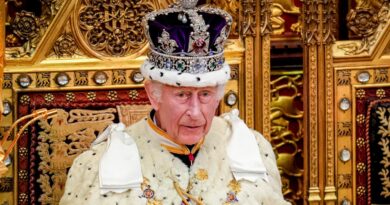The tiny European country that’s a hub for ‘dark tourism’ but only gets 350k visitors | World | News
Following years of struggle and a full blown war between 1998 and 1999, Kosovo is one of the smallest, and youngest, countries in Europe. It declared its independence in 2008.
Officially the Republic of Kosovo, it is a landlocked country situated in southeastern Europe. It covers an area of 4,203 square miles and has a population of about 1.6 million. With its central position in the Balkans, it serves as a connection between central and south Europe, the Adriatic Sea and the Black Sea.
During the conflict, between 848,000 and 863,000 ethnic Albanians fled or were forcefully driven from Kosovo and an additional 590,000 were internally displaced. In 1999 more than 11,000 deaths were reported, with some 3,000 people still missing as of 2010.
However, only about half of the UN member states do not yet recognise Kosovo as a state, not least Serbia, from which Kosovo seceded, nor Serbia’s close ally, Russia.
This struggle for independence, and the sacrifices made for the cause along the way, form the core of the country’s dark tourism appeal.
Tourism in Kosovo is characterised by archaeological heritage from ancient times, including the Illyrians, Romans, Byzantines, Serbian and Ottoman times. It is also marked by traditional Albanian and Serbian cuisine, architecture, religious heritage, traditions and natural landscapes.
There are numerous sites related to Kosovo’s turbulent post-Yugoslav history and the war, including monuments commemorating episodes of conflict and war cemeteries.
Roughly halfway Mitrovica and Prekaz is a large recreation of a black Albanian eagle with its wings spread around ten metres wide, positioned above a set of Kosovo Liberation Army (KLA) graves. At the back of the site is a socialist-era car wreck and some other debris.
It has a variety of natural features, including being surrounded by mountains – the Sharr Mountains in the south and southwest, bordering North Macedonia, while the Kopaonik Mountains rise in the north. The country’s highest peak, Gjeravica at 2,656 metres, is in the south, bordering Albania and Montenegro.
The country also has two declared national parks: the Bjeshkët e Nemuna National Park and Sharr Mountains National Park. The former, located in the west, spans over 63,000 hectares and boasts a multitude of lakes, thick forests of deciduous and coniferous trees and alpine vistas.
The Sharr Mountains National Park, in the southwest, includes a diverse range of landscapes including glacial lakes and alpine and periglacial terrains.
White Drin Waterfall and the Bukuroshja e Fjetur Cave, both located near each other in the Accursed Mountains in the north of Peja, are some of the most famous tourist destinations in Kosovo, drawing thousands of visitors from all over the world.
Located on the slopes of Sharr Mountains, the Brezovica ski resort claims its status as the premier hub for winter tourism in Kosovo. During winter, mainly skiing and snowboarding take place. In the summer, it transitions into an eco-tourism hub, offering opportunities for hiking, mountain biking and golf.
The Medieval Monuments in Kosovo are a combined UNESCO World Heritage Site, consisting of four Serbian Orthodox Christian churches and monasteries. It includes the Patriarchate of Peć, built between 1230 and 1330.
The bulk of international tourists are from Albania, Germany, Italy, the US, the UK, Croatia and Austria. Tourism is a growing sector with more tourists visiting every year.
The Statistical Agency of Kosovo publishes hotel statistics on a quarterly basis since 2008. In 2023, the reported number of hotel nights spent by non-residents was 746,501 compared to 544,701 in the previous year. The number of foreign visitors also increased from 297,588 in 2022 to 357,717 in 2023.





